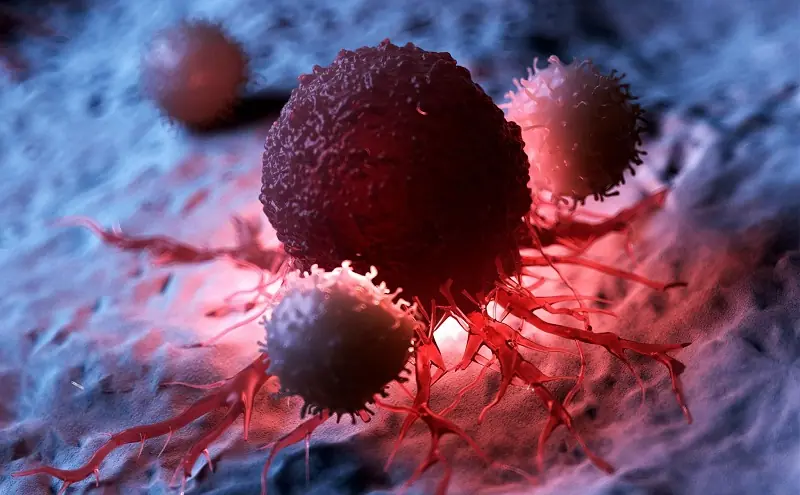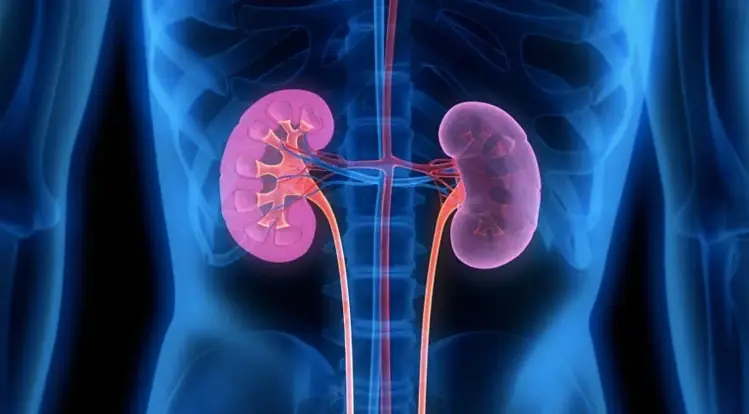
Neuroscientist reveals the 500-calorie “fast” that doubles autophagy and resets your metabolism in just 3 days

What if you could experience the profound, deep-cleansing effects of a multi-day fast—without actually depriving yourself of food? It might sound impossible, but groundbreaking work by experts like Dr. Dominic D’Agostino and Dr. Valter Longo has shown that it’s entirely achievable. Through what’s known as a modified fast or fasting-mimicking diet (FMD), you can tap into your body’s natural healing mechanisms—like cellular repair, fat metabolism, and inflammation control—while still eating small, nourishing meals.
This approach isn’t about grueling water fasts that leave you lightheaded and exhausted. Instead, it’s a strategic, science-backed method that allows your body to enter a rejuvenating, restorative state known as autophagy, all while maintaining basic energy and nutrient intake. The result? You unlock many of the same metabolic and anti-aging benefits of fasting—without the suffering or the risks.
Key Takeaways
-
You can activate your body’s cellular cleanup system (autophagy) with a 3–5 day, ~500-calorie modified fast.
-
Studies show this method can improve blood sugar control, insulin sensitivity, triglycerides, and inflammation markers.
-
It’s psychologically easier and physiologically safer than a full water fast.
-
The metabolic benefits can last for weeks, providing a long-term “reset” effect.
-
Pairing the protocol with light exercise (like brisk walking) enhances results.
1. What Exactly Is a Modified Fast—and Why Does It Work?
A modified fast is not about total deprivation—it’s about creating a controlled energy deficit that tricks your body into entering a fasting state while still receiving essential nutrients. As Dr. D’Agostino explains, the key is consuming around 500 calories per day for a limited period of 3 to 5 days.
During this time, your blood glucose drops, and ketone levels rise, signaling your body to switch from using sugar as fuel to burning fat. This metabolic transition—called therapeutic ketosis—initiates powerful internal processes, including autophagy and mitochondrial rejuvenation.
Think of it as flipping your body’s “renewal” switch: you’re giving yourself just enough food to prevent fatigue, while still creating the metabolic stress needed to trigger cellular repair. This method is the foundation of Dr. Valter Longo’s Fasting Mimicking Diet, which has been widely studied for its benefits in longevity, inflammation reduction, and metabolic balance.
By contrast, traditional water fasts can cause dizziness, electrolyte imbalances, or even hormonal disruption. The modified fast avoids these pitfalls while still delivering the core benefits of fasting physiology.
2. The Power of Autophagy: How Your Cells Clean and Rebuild
The term autophagy comes from Greek roots meaning “self-eating.” It’s your body’s internal recycling system, breaking down damaged cells, old proteins, and worn-out components to rebuild new, healthy ones. This process keeps your tissues youthful and your metabolism efficient.
A modified fast stimulates autophagy primarily by lowering insulin and creating an energy deficit. When insulin levels fall, your body downregulates growth signals and turns on repair pathways. As Dr. D’Agostino notes, this combination of calorie restriction and ketosis dramatically increases autophagic flux—the rate at which cellular cleanup occurs.
You can think of autophagy as a deep-clean cycle for your body: clearing out the biological “junk,” improving mitochondrial efficiency, and reducing inflammation. Emerging research also links enhanced autophagy to slower aging, better cognitive function, and improved resistance to chronic disease.
3. A Short Fast, Long-Lasting Results
Perhaps the most surprising aspect of the modified fast is how quickly it works and how long the benefits last. Within 3 to 5 days, measurable improvements can appear in your blood markers:
-
Triglycerides decrease
-
Inflammation markers (like hs-CRP) drop
-
Fasting blood glucose and insulin levels normalize
-
Ketone production rises, signaling metabolic flexibility
What’s more, these improvements often persist for weeks, even after returning to your normal eating pattern. Dr. D’Agostino calls this the “metabolic carryover effect”—a kind of extended benefit where your body continues operating in a more efficient, less inflammatory state long after the fast ends.
This isn’t just about temporary weight loss; it’s about reprogramming your metabolism toward long-term balance and vitality.
4. How to Do a 3–5 Day Modified Fast
The method is surprisingly straightforward—and adaptable.
Calorie Target: Around 500 calories per day (some protocols go up to 700). You can eat all at once or divide into two mini-meals.
Duration: 3–5 days. Most people enter peak autophagy around day 3; maintaining it for another 1–2 days maximizes the benefits.
What to Eat:
-
Keep carbs very low to promote ketosis.
-
Focus on nutrient-dense, high-fat, moderate-protein foods such as:
-
Sardines, mackerel, or salmon
-
Eggs or egg yolks
-
Avocado or olive oil
-
Small portions of leafy greens or cruciferous vegetables
-
A teaspoon of MCT or coconut oil for added ketone support
-
Protein: Moderate intake—about 40–50 grams per day—is ideal. Too much protein can blunt autophagy, while too little can risk muscle loss.
This balance makes the modified fast sustainable and repeatable, unlike total fasting, which can feel extreme and lead to rebound overeating.
5. Why It’s Easier and Safer Than a Water Fast
Water fasting, while effective in short bursts, can be extremely challenging. The absence of food can trigger headaches, low blood pressure, electrolyte imbalances, and intense hunger. Hormone levels—particularly testosterone and thyroid hormones—can also plummet with prolonged deprivation.
In contrast, a modified fast preserves hormonal balance and reduces side effects by supplying small but meaningful amounts of calories. You remain functional, focused, and even energized. The psychological relief of eating—however minimally—helps most people complete the fast successfully, making it far more sustainable as a recurring wellness practice.
6. Amplify Results with Gentle Movement
If you want to take your results to the next level, pair your modified fast with light physical activity. Exercise is another trigger for autophagy and helps burn extra calories to deepen the energy deficit.
Choose low-intensity exercise such as:
-
Brisk walking
-
Yoga or stretching
-
Light cycling or swimming
Avoid heavy strength training or endurance work during this time, as recovery is limited. Even an hour of brisk walking can effectively mimic the caloric deficit of a full-day fast while keeping your body nourished.
7. Healing the Gut and Strengthening Immunity
A major but often overlooked benefit of fasting is its impact on your gut and immune system. When you drastically reduce food intake, your digestive tract gets a much-needed rest. This downtime allows the intestinal lining to repair itself and strengthens the tight junctions that keep harmful toxins out of your bloodstream.
A healthier gut barrier reduces systemic inflammation, supports mental clarity, and enhances nutrient absorption.
Additionally, ketosis produces beta-hydroxybutyrate (BHB), a molecule that not only fuels your brain but also acts as a signaling compound to suppress inflammation and enhance immune resilience. This explains why ketogenic and fasting therapies are being studied for their potential in supporting cancer treatments and autoimmune conditions.
Conclusion: A Practical, Powerful Reset for Modern Living
You don’t need to starve yourself to achieve the life-changing benefits of fasting. The modified fast offers a practical, science-supported path to cellular rejuvenation, metabolic health, and long-term vitality.
By committing to just 3–5 days of intentional caloric restriction—around 500 calories per day of nutrient-dense, low-carb foods—you can spark a wave of healing processes: improved insulin sensitivity, reduced inflammation, enhanced autophagy, and a renewed sense of energy and clarity.
According to Dr. D’Agostino, repeating this protocol once a month or even quarterly can serve as a powerful metabolic tune-up. Think of it as pressing your body’s “reset” button—a short, achievable practice that delivers benefits lasting far beyond the fast itself.
In a world where chronic inflammation and metabolic dysfunction are the norm, this simple approach gives you the tools to take control of your biology—no starvation required.
News in the same category


Roselle: The Scarlet Herbal Treasure with Powerful Health Benefits

Clove-Infused Honey Power: A Natural Wellness Booster You Can Make at Home

How to Detoxify and Cleanse Each Organ to Never Be Sick or Tired Again

NEW 10 UNUSUAL SIGNS OF COLON CANCER

Don’t throw these 4 things when someone passes away

Eat Celery Regularly for a Healthier Digestive System and Lower Blood Sugar Levels

Pineapple And Turmeric Drink Reverses Cancer-Causing Inflammation And Even Beats The Common Cold!

Warning: 12 Weird Signs That Show You’re Having Liver Damage

Top 3 Vitamins for Hip Arthritis

How to Use Guava to Care for Your Eyes: Natural Remedies That Surprise 🌿

Roselle: The Scarlet Herbal Treasure with Powerful Health Benefits

Drink Cloves with Cinnamon First Thing in the Morning: See What Happens to Your Body the Next Day!

Senna Alata: The Healing Candle Bush with 30 Impressive Benefits and Easy Homemade Uses

Are Crocs Actually Bad for Your Feet

Popular Blood Pressure Drug Linked To Increased Risk of Skin And Lip Cancer

Dead Butt Syndrome Is Real

A 3-Year-Old Girl Bit a Thermometer and Swallowed Mercury: A Mother’s Smart Reaction Saved Her Daughter’s Life and Earned the Doctor’s Praise

5 Signs of Kidney Failure That, If Ignored, Could Lead to a Lifetime of Dialysis
News Post

8 reasons why adding baking soda to your toilet tank is a must-do trick

Home at Last: Luke Continues His Fight with Courage, Faith, and Family

🍗 Did You Know? Chicken Gizzards Are a Nutritional Powerhouse Worth Trying

Finding Her Voice: How a Fall Led Beth to Advocacy and Hope

Hampton Rose: A Heart Angel Whose Legacy Continues to Inspire

Don’t Boil Chicken with Just Salt and Water—Try This Method for Golden Skin and Juicy Meat

Sprinkle a Handful of White Powder into Your Kettle—The “Magical” Result Will Astonish You

Don’t Wash New Clothes with Soap—Soak Them in This Instead, and They’ll Keep Their Color for 5 Years

Here’s What Really Happens To Your Body If You Drink Diet Soda

Roselle: The Scarlet Herbal Treasure with Powerful Health Benefits

Clove-Infused Honey Power: A Natural Wellness Booster You Can Make at Home

Best DIY to regrow new hair on your bald patch

Natural Hair Darkening with Coffee and Cornstarch: A DIY Treatment for Grey Hair and Healthy Scalp

DIY Botox With Vaseline: A Natural Anti-Aging Remedy for Wrinkles, Fine Lines, and Age Spots

CCF Tea to Burn Belly Fat

Best Bridal Ubtan & Face Packs

DIY Clove Oil for Skin Tightening: A Natural Anti-Aging Remedy for Wrinkles and Fine Lines

Turmeric Eye Mask for Dark Circles: A Natural Remedy for Brighter, Youthful Eyes

Rice Water for Skin | DIY Toner Benefits to Remove Dark Spots & Shrink Large Pores
